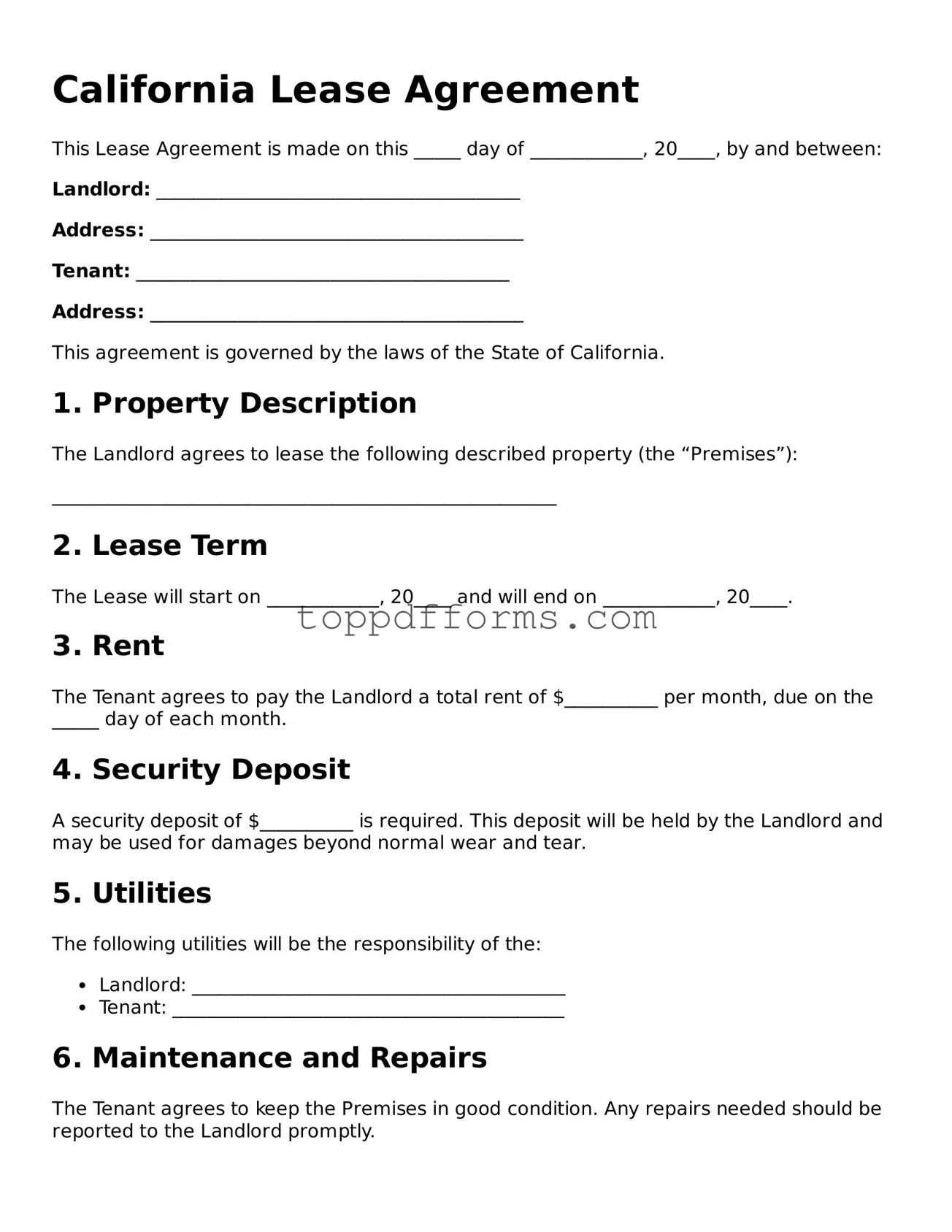What is a California Lease Agreement form?
A California Lease Agreement form is a legal document that outlines the terms and conditions under which a landlord rents property to a tenant. This form includes essential details such as the rental amount, duration of the lease, responsibilities of both parties, and rules regarding the property. It serves to protect the rights of both the landlord and the tenant throughout the rental period.
What are the key components of a California Lease Agreement?
Key components of a California Lease Agreement include the names of the landlord and tenant, property address, rental amount, payment due dates, security deposit information, lease duration, maintenance responsibilities, and any specific rules or restrictions regarding the property. These elements ensure clarity and help prevent misunderstandings between the parties involved.
How long is a typical lease term in California?
Lease terms in California can vary, but they typically range from six months to one year. Some landlords may offer month-to-month agreements, which provide more flexibility for tenants. It is important to carefully review the lease term specified in the agreement, as it dictates how long the tenant is obligated to rent the property.
What is a security deposit, and how much can a landlord charge?
A security deposit is a sum of money collected by the landlord at the start of the lease to cover potential damages or unpaid rent. In California, the maximum amount a landlord can charge for a security deposit is typically equivalent to one month's rent for an unfurnished unit and two months' rent for a furnished unit. This deposit must be returned to the tenant within 21 days after the lease ends, minus any deductions for damages or unpaid rent.
Can a landlord enter the rental property without notice?
No, a landlord cannot enter the rental property without providing proper notice to the tenant. In California, landlords are required to give at least 24 hours' written notice before entering the property, except in emergencies. This rule is designed to protect the tenant's right to privacy and ensure a respectful landlord-tenant relationship.
What happens if a tenant wants to break the lease early?
If a tenant wishes to break the lease early, they should first review the lease agreement for any specific terms regarding early termination. In many cases, tenants may be required to provide written notice and may incur penalties, such as losing their security deposit or paying rent until a new tenant is found. Open communication with the landlord can sometimes lead to a mutual agreement that works for both parties.
Are there any specific laws that govern lease agreements in California?
Yes, California has specific laws that govern lease agreements, including regulations related to security deposits, rent control, and tenant rights. The California Civil Code outlines these laws, ensuring that both landlords and tenants understand their rights and responsibilities. It is advisable for both parties to familiarize themselves with these laws to ensure compliance and protect their interests.
